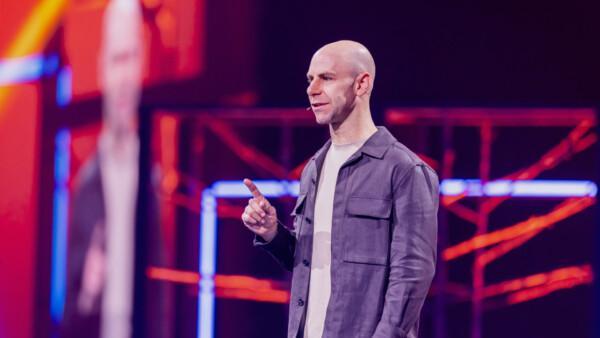2Oct2024
Why is it that some organizations get more out of the people they hire? According to renowned researcher, executive advisor, and author Liz Wiseman, the answer lies in how the genius of its leaders is applied. Drawing from both her corporate experience and extensive research, Liz shared insights on how leadership can shift away from diminishing the talent of others to unlocking the full potential of their teams, fostering a culture of trust, empowerment, and innovation.
Genius or Genius Maker?
According to Liz, those who found themselves in the presence of former British Prime Minister William Gladstone felt like he was the smartest person in the room, whereas his political rival Benjamin Disraeli, “had the skill of making others feel like the smartest person in the room.” As Liz explained, Gladstone and Disraeli could be considered a genius and a genius maker, with Gladstone’s genius acting to diminish the talents of others, and Disraeli’s leadership genius multiplying the innate talents of the people he encountered.
Liz emphasized that many leaders “operate as ‘diminishers’ without even realising it.” These leaders may be talented and intelligent themselves, but they unintentionally suppress the contributions of their teams by focusing too much on their own ideas, decisions, and control. As Liz put it, “Diminishers may hire smart people, but they quickly put other people in the background.”
In contrast, multipliers believe in the inherent capability of their teams. They create an environment where people feel empowered to take risks, innovate, and contribute their best thinking.
The Hidden Potential in Organizations
Liz observed that “many employees today feel overworked yet underutilized.” In fact, as Liz noted, it is common for people working for diminishers to feel they contribute less than half of their intelligence at work.
“And what do people feel like when they’re unable to contribute their full capabilities at work? Empty. Frustrated. Tired. Burnt out.”
According to Wiseman, unlock upwards of 95% of the intelligence in their team because they excel at recognizing hidden potential. Their leadership makes employees feel safe to take risks and contribute their best ideas.
Five Key Differences between Multipliers and Diminishers
Liz identified five key distinctions between multipliers and diminishers, offering a practical framework for leaders to reflect on their own behaviours:
Talent management: Diminishers focus on acquiring talent but often underutilize the people they hire. Multipliers, on the other hand, are developers of talent that actively seek out and nurture the capabilities of their team members.
Work environment: Diminishers create a tense work environment where people play it safe and avoid taking risks. In contrast, multipliers create an “intense but positive” environment where people are encouraged to push themselves and take on challenging tasks.
Direction setting: Diminishers tend to tell people what to do, issuing directives that limit creativity and ownership. Multipliers ask questions, encouraging their teams to think critically and solve problems independently. As Liz pointed out, “Their currency is a question.”
Decision-making: Diminishers often make quick decisions that leave others confused about how to execute. Multipliers involve their teams in the decision-making process, generating debates that lead to a unified and well-informed approach to execution.
Getting results: Diminishers often micromanage, while multipliers give teams ownership over tasks. By doing so, multipliers allow their teams to achieve results without constant oversight.
The Accidental Diminisher
Interestingly, Liz revealed that many diminishing behaviors are unintentional. In her research, she discovered that most diminishing leaders are not tyrannical or narcissistic but rather:
“accidental diminishers – they have good intentions but unknowingly stifle the creativity and potential of their teams.”
She provided several examples of common accidental diminisher behaviors:
- The idea fountain: a leader that constantly shares ideas and unintentionally overwhelms their teams, leading to inaction and dependency.
- The always-on leader: a constantly proactive leader who causes others to feel they can never keep up.
- The rescuer: a leader that always steps in to help team members but undermines their confidence and prevents them from learning how to solve problems independently.
- The pacesetter: a leader that sets a fast pace in hope of inspiring others to follow but instead creates a team of spectators.
- The rapid responder: A leader quick to answer questions and solve problems that erodes ownership and decision-making among their teams.
Liz encouraged leaders to reflect on their own behaviors and consider whether they might be unintentionally diminishing the people around them.
Four Leadership Practices for Multiplying Intelligence
To help leaders transition from diminishing to multiplying, Liz offered four practical leadership practices:
Shift from giving answers to asking questions: By asking thoughtful questions, leaders can shift the burden of thinking to their teams, encouraging them to develop solutions and take ownership of challenges.
Look for native genius: Rather than focusing solely on traditional qualifications or skills, leaders should seek out the “native genius” of their team members—the unique talents and capabilities that come naturally to them.
Reframe problem behaviors: Instead of viewing certain behaviors as problematic, leaders should try to understand the underlying intent and harness it for positive outcomes.
Give stretch challenges: Rather than rescuing employees when they face challenges, leaders should give them stretch assignments that push them out of their comfort zones and encourage growth.
Liz concluded by emphasizing the power of “creating a balance between safety and stretch.” By fostering an environment where people feel safe to take risks, while also being challenged to grow, leaders can build organisations filled with courageous and capable individuals.
Key points:
- Multipliers unlock hidden potential: Multiplier leaders amplify the intelligence, creativity, and capability of those around them, creating an environment where employees can contribute their full potential.
- Accidental diminishers stifle teams unintentionally: Many leaders unintentionally diminish their teams by over-involvement, micromanaging, or rescuing behaviors that come from good intentions but limit others’ growth and contribution.
- Asking questions over giving answers: A key practice of multipliers is shifting from distributing answers to asking thought-provoking questions that challenge others to think independently and solve problems.
- Empower through trust and stretch challenges: Multipliers create a balance between safety and stretch, offering trust and giving people challenges that push them beyond their comfort zones, encouraging growth and innovation.
- Healthy intensity over tension: Instead of creating a tense work environment, multipliers foster healthy intensity where employees feel empowered and motivated to do their best work without fear of failure.
Questions for Reflection:
- How can you shift from giving answers to asking questions that stimulate independent thinking in your team?
- Are there any behaviors you exhibit with the best of intentions that may be accidentally diminishing others’ contributions?
- What strategies can you adopt to create an intense (but not tense) work environment that encourages innovation and creativity?
- How can you better identify and leverage the “native genius” within your team to maximise their potential?
- In what ways can you give more ownership and stretch challenges to your team members, empowering them to grow and develop?



